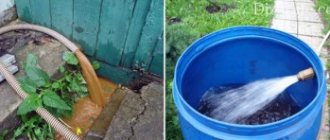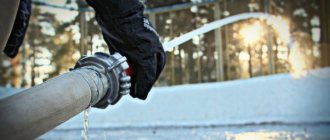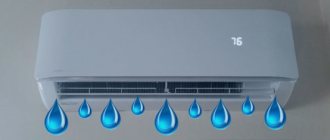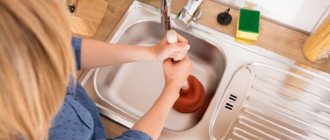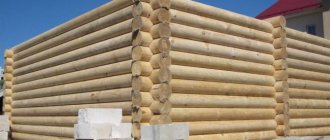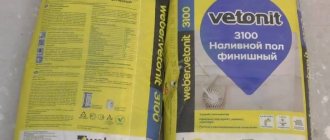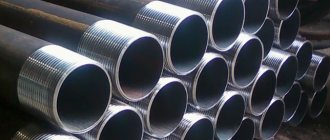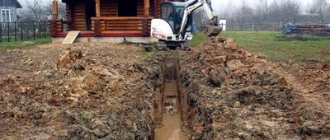How to change a hose on a faucet
How to change a hose on a faucet
One of the thin places where the mixer is connected to the water supply wiring is the hose. After a long period of operation, it often begins to leak, which is due to the peculiarities of its design. The mixer itself works properly. In this case, it is enough to replace the old connection with a new high-quality product. It is important to first choose the right replacement.
Where is the hot and cold water located on the tap?
On which side should the hot and cold water tap be? There are Russian and foreign standards. Their requirements for the location of taps differ.
According to Russian standards
SNiP from 1976 clearly states that in a water supply system, a faucet with warm water should be installed on the left side, and a tap with cold water on the right.
You can read about this in regulation III-28-75.
Warm water supply pipes are located in the system to the right of the cold risers . However, the outdated SNiP rules are no longer valid. But plumbers continue to model the water supply system according to the old standards.
That is why mixers are produced with the following indication:
- warm water - on the left side;
- cold - on the right side.
Sanitary requirements also regulate:
- Required pressure in water collection areas.
- The desired ambient air temperature in the heated room.
- Water consumption.
- Drinking water safety.
- Design of engineering systems in high-rise buildings.
- Fire safety system.
- Safety of hot water supply systems.
According to foreign standards
In European countries, the warm flow valve is located on the left side of the mixer. The current norms are simple and understandable to every person. In some countries, the mixer flow arrangement may be different.
How to connect a pipe and a flexible hose?
There are several ways to connect a metal pipe to a flexible hose. Here are the simplest ways. If the hose is flexible, the so-called gas hose, which can withstand high pressure, then you need to buy an adapter with a threaded connection at the end. This adapter is inserted on one side into the inside of a flexible hose (made in the form of a “brush”) and clamped from the outside with a clamp.
It is extremely important to know which pipe and which flexible hose we are talking about.
Here is a flexible hose “female-female” (nut internal thread).
To connect such a hose, for example, to a polypropylene pipe, you need a male fitting (male thread).
We solder the male fitting to the polypropylene pipe and connect the flexible hose to the fitting (male-male connection through a gasket).
This flexible hose is connected to a metal pipe in approximately the same way, but a thread is first cut on the pipe.
If you had in mind a certain rubber hose and a steel pipe, then you can cut a thread, plus this fitting with a herringbone transition.
We pack the threaded connection (tow + tow, the tow is wound onto the “male” thread on the pipe), insert the flexible hose into the “herringbone” and tighten the herringbone with a clamp.
As you already understand, there are dozens of options for connecting pipes and hoses; I have described only a small part.
When choosing one option or another, consider both the diameter of the pipe and the internal diameter of the hose.
Threaded connections are more reliable than clamps.
We can advise on a lot of things, but it would be nice for us to know what the diameter and material of the pipe and hose are, and what the pressure of the medium is.
Without this, I can suggest these connection methods.
- fitting connecting the threaded part of a pipe and a hose. The hose is placed on the fitting and tightened according to the trunnion principle -
- adapter fitting to the threaded part of the pipe from the hose. The hose is put on the fitting and secured with a clamp. Adapters are available with both external and internal threads -
There are these quick-release crimp fittings. We put a hose on one end and tighten it, and we put the other on the pipe and tighten it the same way. Here the choice of diameters is very large; you can choose a fitting from a thin hose to a thick pipe.
If you are attaching a flexible corrugated drain hose, for example from a washing machine to a sewer pipe, then there are also special inserts and connecting elements. For example, these are rubber adapters with an outer diameter of 50 mm. and the inner one is for the hose from the washing machine.
All of the above connection methods are suitable for water supply systems without pressure and low pressure.
There is also a simple method that will help if the outer diameter of the pipe is slightly larger than the inner diameter of the hose or equal to it. We simply chamfer the pipe at an angle, making the so-called “zaman”. We clean the pipe from rust to the length of the fit, lubricate it with auto sealant and put on a hose. We fix the hose placed on the pipe with clamps. It doesn't hold too badly either.
There are many ways to connect a pipe and a flexible hose.
The fact is that a lot depends on how much you need to connect. And naturally, a lot depends on the characteristics of the most flexible hose and pipe. As they say, from the ratio of their diameters.
For example, at the dacha, I often connect pipes and hoses, for example, when the length of the hose is not enough to wash the car or water the cherries outside. Sometimes when connecting a pump to a flexible hose, clamps are required like on a car. You can, of course, tighten it with wire, but this is a one-time connection. But with clamps it looks better, more reliable and more beautiful.
But sometimes there are thick-walled hoses and it is very difficult to put them on. For example, we had a vacuum pump at work, and Hercules couldn’t have put a hose on its inlet pipe. But if you soaked such a hose for a couple of minutes in toluene, it was easy to put on and held tightly. But you can’t soak it for a long time, since the rubber then quickly begins to “age.”
Source
Which GOST regulates this issue, what does it say?
There is GOST 25809-96, which regulates the very design of the water tap, hoses, and outlet pipes. However, it does not regulate the supply to the mixer valves. The location of the water supply tap is determined only by the working drawing.
GOST suggests choosing the position of the hot and cold tap depending on the existing drawing of the system being modeled.
According to the European standard and the Russian standard, warm water is supplied from the left side of the mixer. Unless the plumbing customer requests otherwise, the water supply is determined as such.
How to connect a garden hose to a metal pipe
Many country water pipes are made of metal. They have various adapters that do not match the diameter of most hose models. This may cause connection problems. In addition, unscrewing the adapters can be quite difficult.
To remove the thread, tap it several times with a hammer. You can also heat the adapter using a gas burner. If the above methods do not help, several cuts are made on the thread with a grinder.
It is recommended to turn off the water before work. Especially if you plan to use an angle grinder. If water gets on the instrument, it may cause an electric shock.
You also need to remove the thread carefully so as not to damage the outlet.
To connect, you will need a detachable fitting suitable for a polypropylene pipe. It would be better if the kit included an adapter for an inch tap thread. The process consists of the following steps:
- Rewinding. Fum tape is used for this. It is wound in one layer, working clockwise. This will ensure a tight seal.
The hose is connected to the metal water supply.
What to look for when installing faucets yourself?
Many apartment and house owners install the faucet themselves. The old SNiP regulations clearly stated the rules for the location of valves on the mixer. Therefore, professional plumbers continue to adhere to traditional standards. They are comfortable for most people.
When arranging the water supply system, it is recommended to pay attention to the comfortable use of water, the location of all valves, taps, and mixers convenient for each family member.
In the bathroom, it is important to consider the location and height of the shower hose holder.
Types of quick-release couplings for hoses and pipes
An irrigation system consists of a certain set of elements that ensure the supply of water from the source to the final point. The main ones are hoses and connecting elements. The sleeve is selected based on the material of manufacture. As a connecting element, the quick release for the hose has proven itself to be the best, as it is capable of performing a reliable and hermetically sealed connection of system elements without the use of tools.
In the organization of modern irrigation systems, quick-release couplings are indispensable
What to do if the sides are mixed up?
Incorrect placement of water supply hoses to the mixer causes great discomfort to many people. A hose with blue spots is used only for installing cold water supply. With red ones - for hot.
To resolve incorrect installation, it is recommended:
- Close the riser valve.
- Remove the nut from the distribution socket.
- Change hoses.
- Reinstall the hoses.
- Install new gaskets under the nuts.
- Check connections for leaks.
- Open the tap and check the flow.
The tubes must be swapped under the sink. The hot water supply is connected to the left socket. To the right - cold. The system can install universal hoses with blue and red shades. They are suitable for supplying both warm and cold flow.
Everything you need to know about hot water is presented in this section of the site.
Connection accessories
Before starting work on connecting the hose, you will need to purchase all the necessary materials. Each type of connection has its own list of required goods.
To the barrel
In order to carry out the procedure for connecting the hose to the barrel without any hitches, you will need to prepare the following available tools in advance:
- fum tape or specialized cream;
- connectors;
- union;
- coupling;
- filter.
It is advisable to purchase all components in a double set, especially if you have no experience in connecting pipes and hoses. There is a possibility of incorrect connection with further reworking of the work. Reattachment requires the use of new materials.
To the tap
When it comes to connecting a hose to a home plumbing fixture, the following list of items is required to be purchased:
- fum tape or sealing cream;
- connectors;
- union;
- coupling;
- clamp;
- threaded fitting (they differ; a different fitting option is selected for each specific situation);
- diverter.
The final list of required materials is influenced by the chosen connection method.
Selection of material for installation
The choice of material is influenced by how the installation will take place, how the pipes will be laid - closed or hidden, ease of installation, i.e. the ability to do all the work yourself. Price is also an important factor.
Many sources still indicate that water pipes can be made with metal, but needless to say, this is already a thing of the past. And that there are a lot of good durable materials on the plumbing market that are quite easy to install, have a long service life, are reliable, harmless, i.e. They are perfect for drinking water supply and have a very nice appearance.
Below is a table with comparative characteristics of pipes used in the installation of water supply.
| Pipe material | price of pipes (rub) | fittings price | additional tool | difficulty of installation |
| skill required | ||||
| Stainless steel | Requires skill | |||
| Metal-plastic | + / — | Easily | ||
| Polypropylene | Easily | |||
| Polyethylene | Easily |
Areas of use of quick-release fittings
Quick-release connections are widely used for domestic needs, namely in watering work. The presence of such elements simplifies assembly, and there is no need to turn off the water. Quick connectors for hydraulic hoses allow you to connect hoses to pumps, sprinklers and other watering elements. They are also used for branching networks. For household needs, simple plastic products that are characterized by wide functionality are sufficient. They usually consist of several elements. Some fittings are equipped with a locking mechanism or an auto-stop option.
Quick release hose connectors work well with a variety of watering attachments. They also protect the hose from kinking. Products made of impact-resistant plastic with a galvanized coating are widely used. They are more convenient to use because they are less slippery.
Fittings are widely used in production shops when installing hydraulic systems. With their help, you can extend the flexible hose, allowing you to move the equipment to another location. There are also quick releases for pneumatic tools. Such fittings are made of impact-resistant steel with a protective corrosion layer. They are presented as whole specimens. When connecting them, the hose is inserted into the device. Inside it is captured by a carved springy bushing, which creates a tightness of the liner. To remove the hose, you must press down on the locking ring.
Various manufacturing materials allow the use of quick releases both in everyday life and in industry
Important! When choosing quick-release connections for a specific area, the diameters, dimensions and operating pressure values for all elements of the system must be ensured.
Quick-release connections have found their application in the installation of special-purpose pipelines in the metallurgical, chemical and mining industries. They are often used in the construction of water, rail or road transport and the assembly of medical equipment.
Work order
If you need to install a water socket in an old and not very strong wall, it is necessary to carry out preparatory work. To do this, all weak areas and seams are cleaned, defects are eliminated, and weak spots are strengthened with a special cement-based compound. Pipe installation begins only after the wall has completely dried.
Most mixers have a center-to-center distance of 150 mm. This length should be taken into account when installing water sockets. But there are faucets that are slightly narrower or wider than others. There should be no problem here, since almost any mixer can be installed on a standard outlet using an adjustable offset of the eccentrics.
On a flat wall, holes for fastening water sockets are marked and drilled (at least 3 pieces, regardless of the material of the system). A small rubber gasket 3–4 mm thick and 7 x 7 mm in size must be glued to the installation surface on the back side of each water socket.
After this, the water sockets are attached to the wall, leveled according to the recessing depth and slope using self-tapping screws. The resulting gap between the installation platform and the water socket is filled with thick polyester putty.

